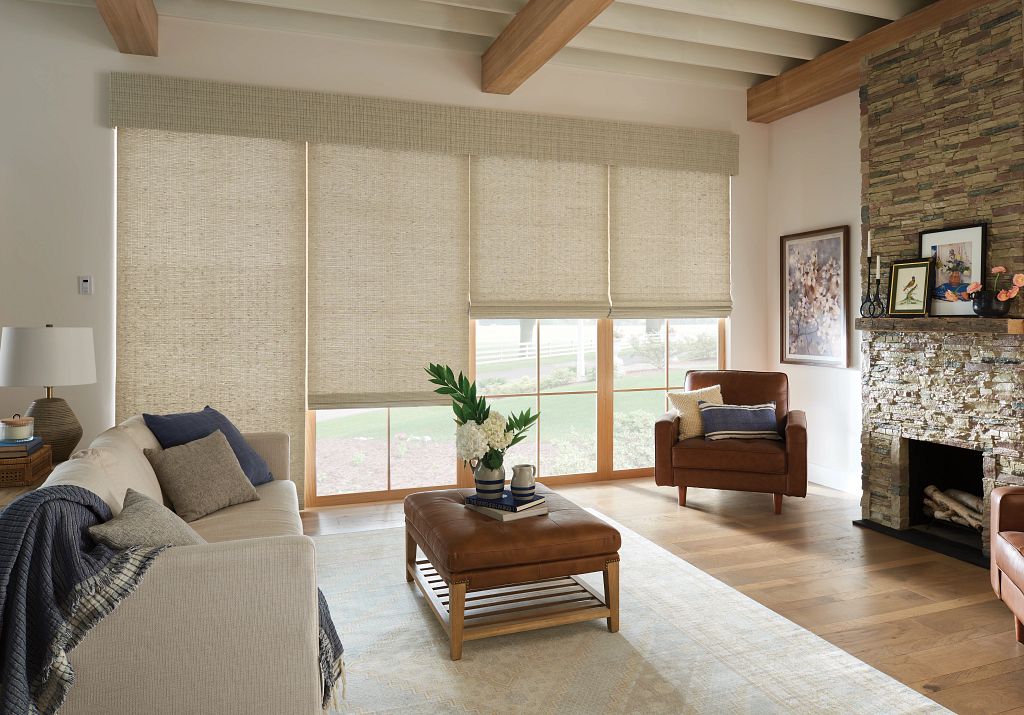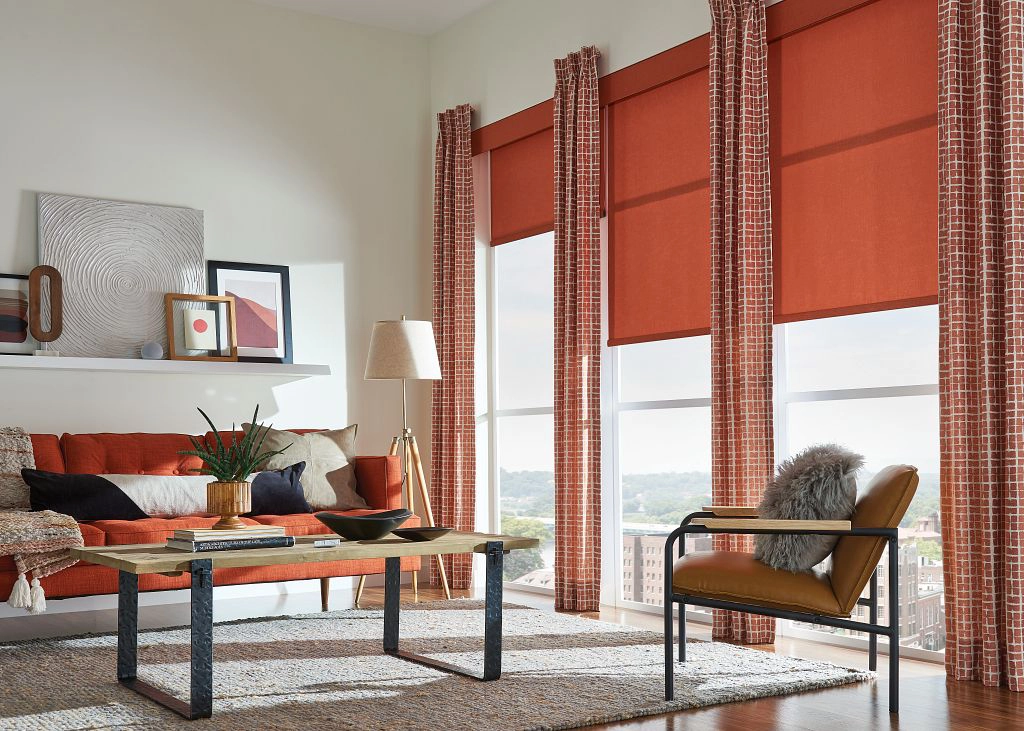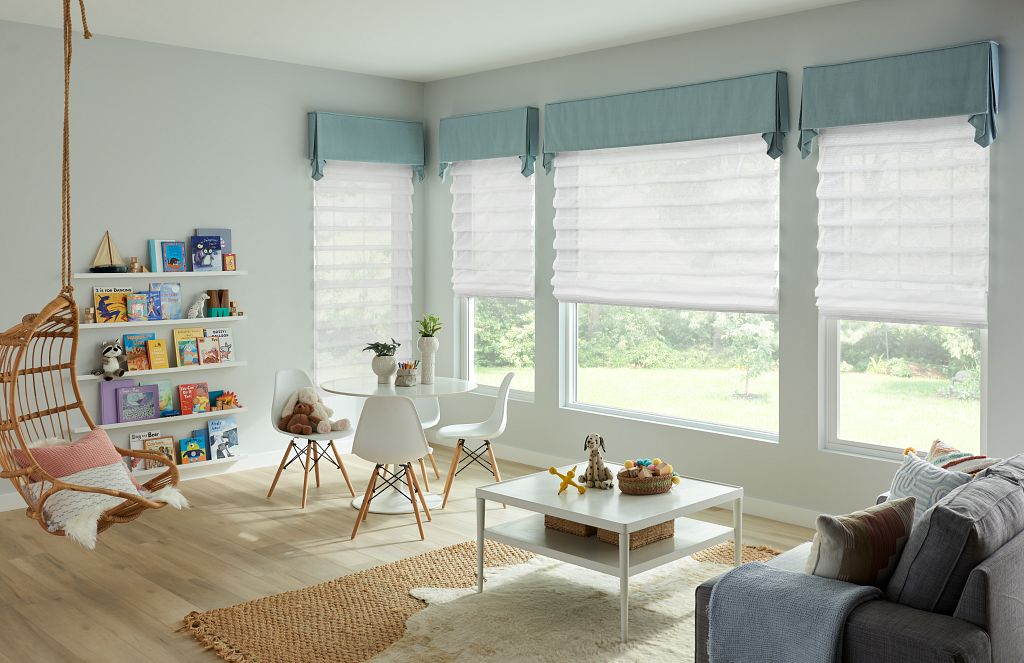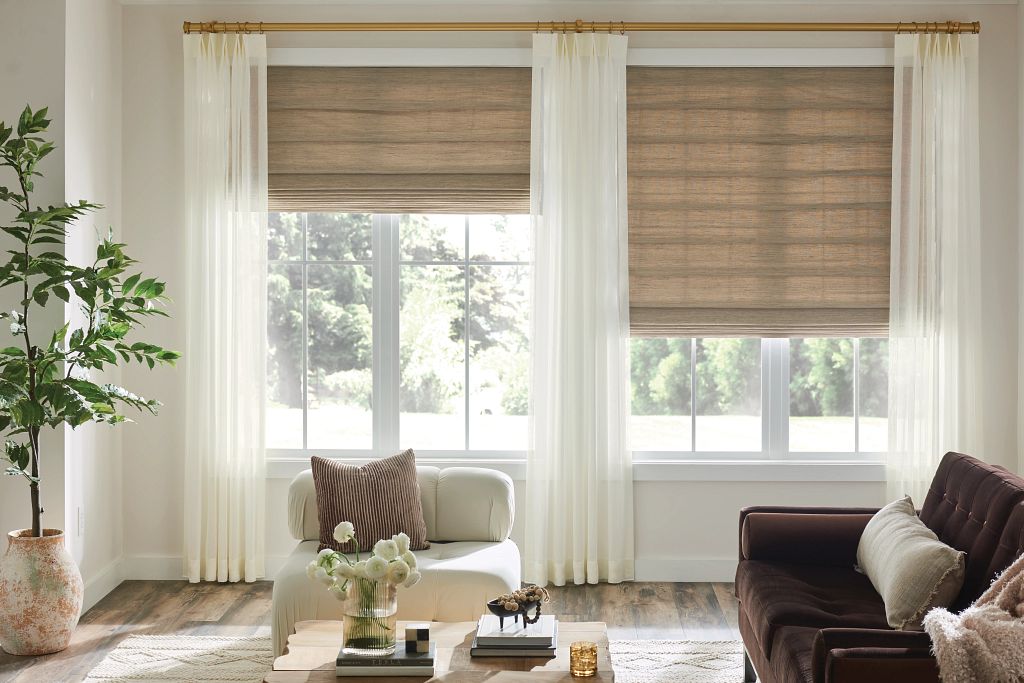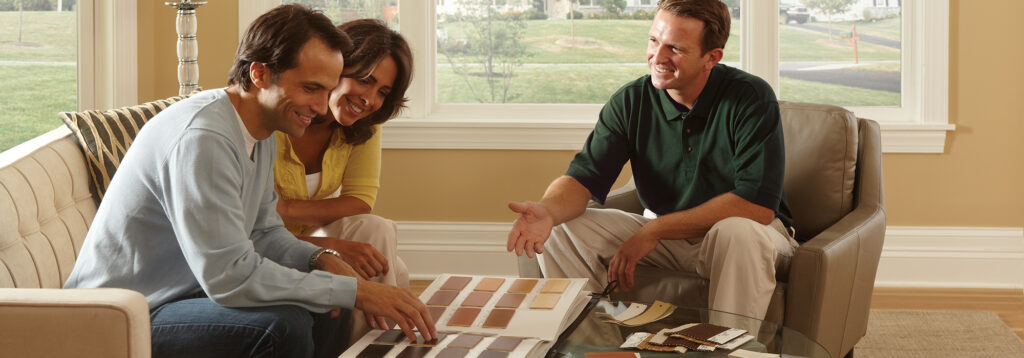Psychology of Interior Design: How Decor Affects Your Emotions at Home
Interior Design Psychology: How Décor Affects Your Emotions at Home
It’s Easy to Become Happier at Home!
You can easily become more comfortable in your home using the psychology of interior design. Positively affect your mood by simply kicking off those shoes, losing the socks, grabbing your favorite libation, and curling up under a blanket in your well-designed, thoughtfully arranged, and warmly painted living room.
Adjustments to colors, layout, and fabrics, textures, and accent items can easily improve your mood and evoke positive feelings.
Ready to learn more about interior design psychology from the experts? Let’s go!
Want to skip to a specific area?
Decor Tips to Improve Your Mood
Emotional Interior Design to Evoke Positive Feelings
Psychology of Decorating and Implementing Color in Interior Design
Feng Shui Design Styles for Overall Happiness
Did You Know Décor Affects Your Emotions at Home?
The psychology of decorating can guide you in designing your space. Subtle emotional signals from your surroundings influence your perception at all times.
In the video below about interior design psychology, learn how to use interior design to create feelings of happiness, comfort, safety, romance, and pride in your home. You can make a positive difference quickly by making changes to the layout, colors, and fabrics.
Interior Design Psychology: How Does a Room Make You Feel?
Psychology is a part of every interior design, so keep your feelings in mind while you are designing. Tap into your inner interior designer with these helpful tips for creating positive feelings for yourself, your family, and your guests.
Before you begin, ask yourself a few questions to assess your home’s current emotions.
- How does a room make you feel when you enter? Optimistic and happy? Stressed and anxious? Relaxed and at ease? Overall, is it negative or positive? Get in touch with the emotions you experience and decide whether you’d like to adjust the design to change those feelings.
- Does your home need more fresh air and circulation? If the space feels stale, consider how to create cross breezes or implement fans in the room.
- Are textures soft in restful areas (living room) and sharp in areas of focus (office)? Various textures can elicit different emotions as well.
- Why did you choose the color of the room’s accents, like curtains or lampshades? Do those choices match the intended mood for the space, and are they in line with interior design psychology?
There is an enormous range of colors, feelings, and functionalities that you may have in mind for your home that affects the psychology of interior design.
Stay true to your desires for a particular feeling. There is no designer like you! Don’t be afraid to ask for help. Third-party consultants (friends, interior designers, etc.) will be able to bring out the inner emotions that you may not be considering.
Emotional Interior Design to Evoke Positive Feelings
We asked our designers how to evoke the following emotions and to which rooms these feelings are best suited. Each emotion has a room scene that features design choices like drapes, carpets, and furniture to improve your mood.
Happiness – Make a Great First Impression
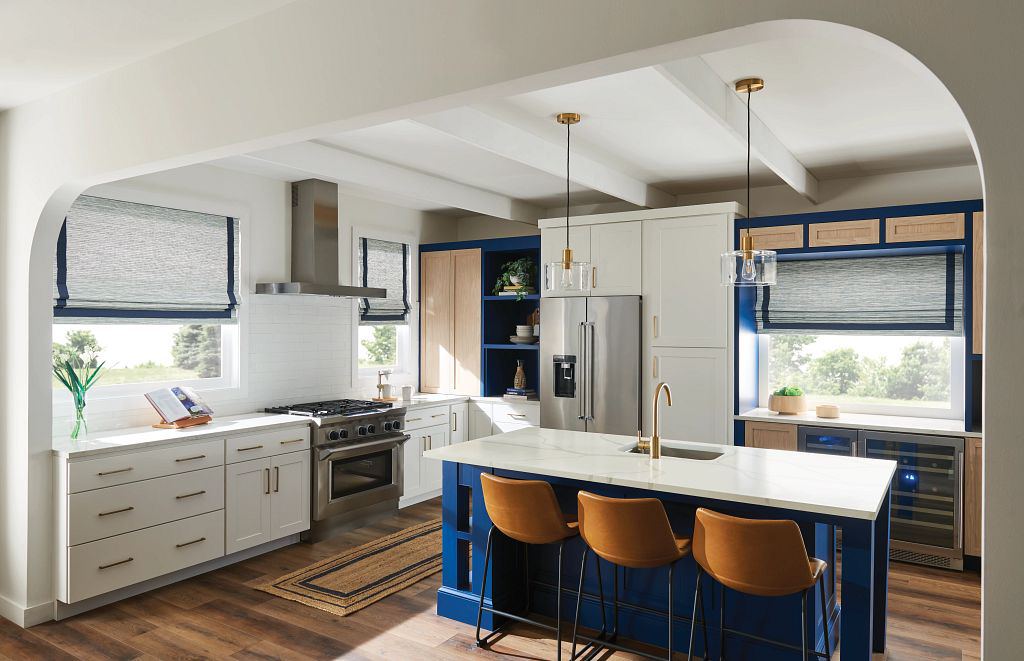
“The living room or the kitchen tends to be gathering places in the home and often make the first impression. These are great spaces to have a happy feel filled with light and air and elegance.”
Comfort – Relax With Warm Textures
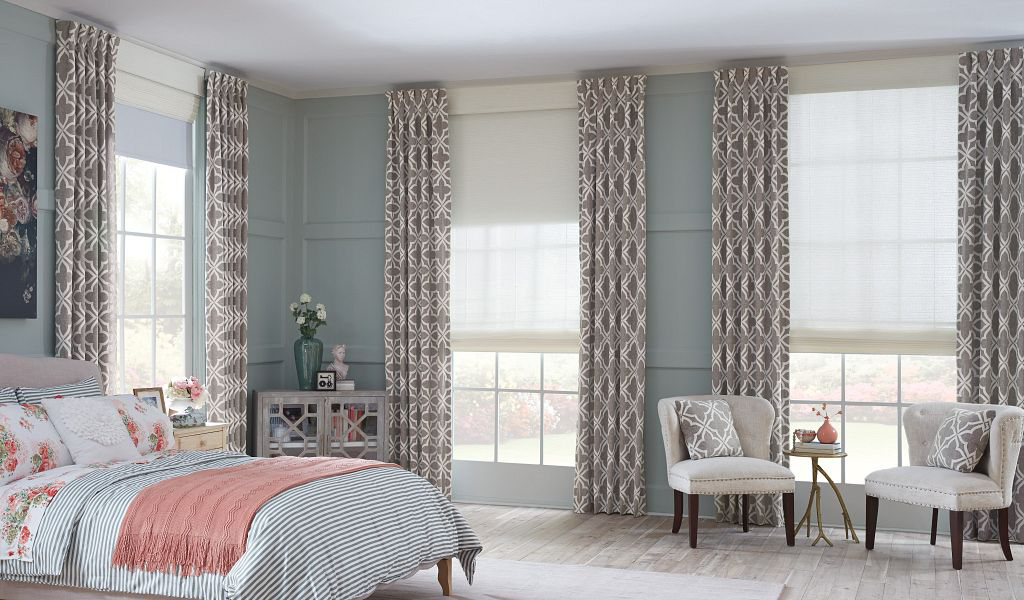
“The master bedroom is a great place to build comfort, along with the family room. This can be accomplished with warm textured fabrics and rich color.”
Pride – Impress Guests While Entertaining
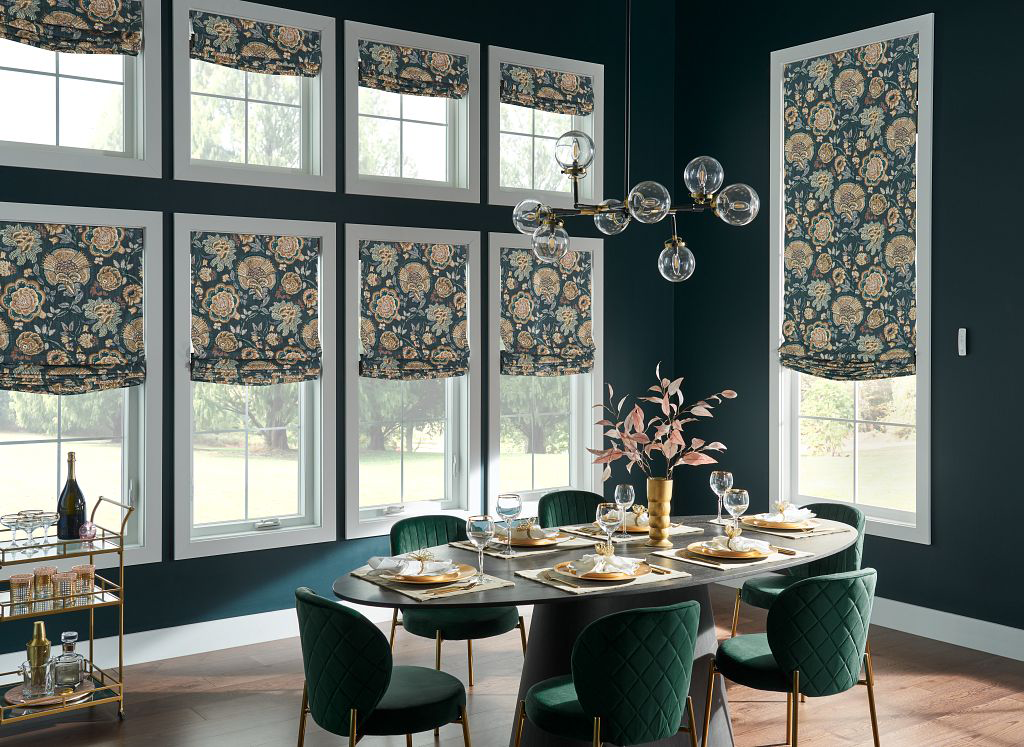
“Usually, the formal living room and dining room are the rooms you use to impress your guests or family members. In the spaces, you want to make a statement, and you want to invest more dollars to create drama and to let the people know who are visiting the home that they are important too.”
Ask a Designer: What Parts of Windows Are Overlooked in the Design Process?
“I find many times that aesthetics is considered alone. Or that function is considered alone. But the best designs are the ones that combine the best aesthetics and the best function, and when a quality product is chosen, it lasts for years to come with maximum enjoyment.”
– Erika Bratschie, Los Angeles Custom Window Covering Designer
Safety – Research Your Options and Double Check the Home Before Decorating
“It’s always important, if there are children in the home or visiting the home frequently, to have the conversation about what would be the best elements to operate custom window treatments that are the most child-safe possible. Cordless controls are a great option for safety.”
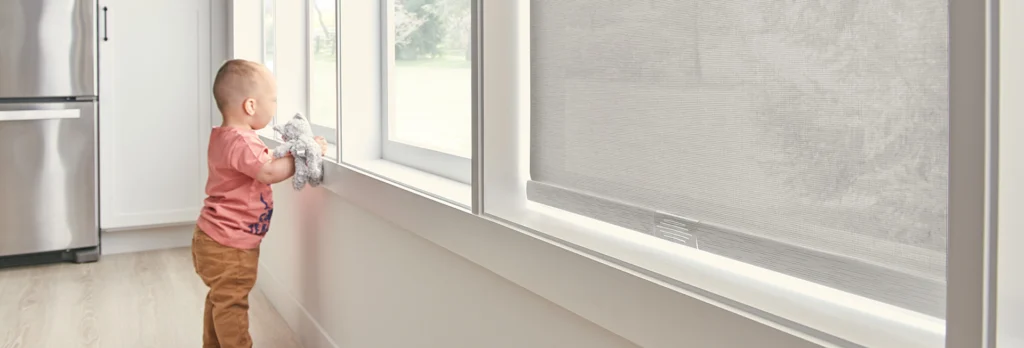
“If you have pets, you’ve got some unique considerations you need to keep in mind. Cords are just as dangerous to pets as they are to children. Cats and dogs especially both have their own unique desires to see out the window, and the personality of your pet may come into play when selecting options they won’t damage.”
Romance – Embrace a Soft and Touchable Atmosphere
“To create a feeling of romance in a room, the fabrics used should be soft and touchable and have some drape or flow in them to help create the mood.”
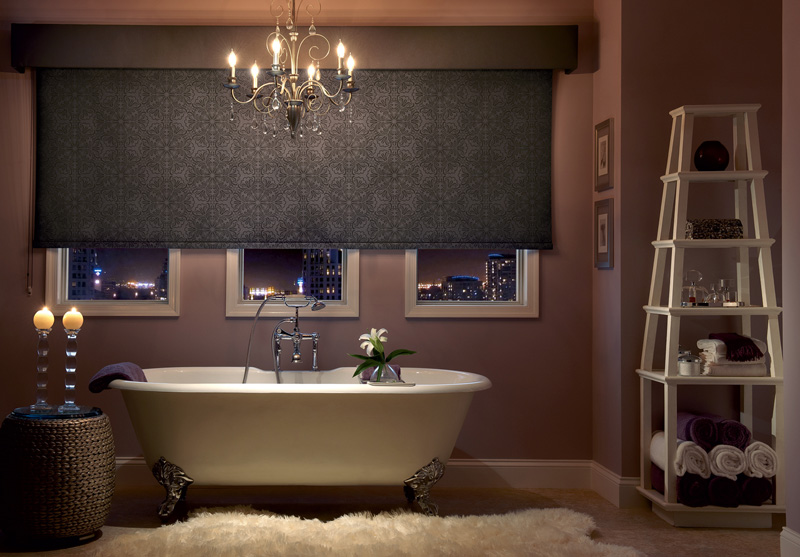
“Soft textures, filtered and dimmable lighting, and curved lines on furniture instead of sharp corners and angles go a long way toward creating a comfortable, relaxing mood ripe for romance. Make the bed the visual centerpiece of the room with a decorative headboard, photos, and paintings, or an accent wall for extra focus on the romantic aspect.”
Related Articles From Our Designers
- Designer Window Fashions – ” The Finishing Touches”
- Decorative Hardware For Elegant Draperies
- Bringing Nature Indoors is the Key to Your Home Sanctuary
- Interior Design Trends: How to Avoid Regret
- Best Window Coverings for Nurseries & Children’s Rooms
Psychology of Decorating and Implementing Color in Interior Design
Choosing the right color is crucial to setting the tone and purpose of a room.
As a rule, lighter colors will feel more open and lighter, like the sky, whereas darker colors give off a heavy feeling and can make you feel more enclosed.
The more white is added to a hue, the more light it is able to reflect, whereas darker colors absorb light. If your room doesn’t have a lot of natural light, be cautious. Beware of overpowering your home with too much darkness when choosing some of your favorite colors. It’s all about balance!
Neutral colors – Versatile for Many Uses
Brown represents a neutral color that can feel very grounding in accents as it is associated with wood, organics, and stability. Be careful of overuse, though, as monochromatic areas may dull your senses or make you sleepy. If you aren’t a big color fan, try to add some brighter accents to the room, such as art, rugs, or throw pillows.
White represents purity, goodness, and cleanliness. Too much white is sometimes associated with sterility, like in a medical setting. White can be elegant and open up a space when used in moderation with strategic color-pop accents. This color is also great for walls in a smaller room that you want to make feel larger. Just be aware that white shows any and all dirt, so it may not be a great choice for rooms with children (or certain adults).
Black is not recommended as a dominant color in any room, except maybe a home theater. This color is powerful, elegant, and best used in moderation. It can serve as a grounding agent to balance a lighter-colored room or add contrast. As an accent wall in an office, it can add a feeling of power – as long as your space isn’t overpowered by the dark, strong color.
Warmer Colors – Energize and Boost
Think of the sun for warm colors – red, orange, yellow.
Red represents fire, love, and anger – it reminds us of passionate energy. This color can increase metabolism and blood pressure – for better or worse. In a dining space, studies have found that people may rush to eat in a red room. This powerful color should be used sparingly or for a specific purpose. In feng shui, red represents good fortune. A more muted red-like terracotta, however, can be peaceful.
Yellow represents happiness, sunshine, positivity. It can bring a sense of sunshine and natural light to rooms that are otherwise dark or small. Paint your space a light, sun-drenched yellow to brighten it and create feelings of joyfulness, optimism, and happiness.
Pink represents happiness, love, and peace. It’s red mixed with white. It is a great option for lovers of red as a calming alternative and is great for children’s bedrooms. Mixed with delicate or lacy white fabrics, it can complement a Bohemian style quite well.
Cooler Colors – Relax and Calm
Cool colors should make you think of the ocean – blue, green, and even cooler purples (if a purple is more red than blue, it’s warm!).
Blue represents confidence, openness, and stability. The most popular color for living rooms is light blue for its calming effect. Envisioning the sky clearly brings in nature and positivity. Darker blues can be bold and luxurious.
Purple represents luxury, ambition, creativity, and wealth. This is a very versatile color for almost any room or purpose. A light lilac purple can be gentle, feminine, and peaceful.
Green represents nature, and darker shades can bring about impressions of wealth as well. Emerald green is known for being associated with luxury. Pale blue-greens are known to encourage happiness, relaxation, and a feeling of comfort. Hospitals use this color often for a reason.
The best way to find inspiration is to look at other designs! View our photo gallery for examples of our favorite styles, or follow us on Pinterest.
We were featured in an article on Porch.com along with other experts for more tips on improving your mood at home: Home Improvement for Family Well-being: Expert Insights and Tips
Feng Shui Design Styles for Draperies, Living Rooms, and Overall Happiness
Feng shui principles state that mimicking the outdoors in your home will put you in a permanently good mood, optimize your health, and improve your life.
These tips will help every place in your home integrate natural elements within interior design psychology to reduce physical, mental, and emotional stress.
Use the following strategies to better adhere to feng shui concepts:
- Maximize natural light or mimic it while matching the lighting of the earth’s rotation. Natural light can also increase positive thoughts and feelings of happiness in your space.
- Declutter your home to remove distractions and improve your productivity.
- Use plants in living areas to improve air quality, relaxation, inspiration, and focus.
- Balance natural elements (fire, earth, water, metal, etc.) for more interest and depth. Specific emotions and feelings can be brought into your home interior decorating with the following natural elements:
- Fire can evoke passion and enthusiasm. Add candles, natural light, and shades of red.
- Earth adds physical stability to the space. Bring in art with landscapes, shades of green, brown, or tan, and square shapes.
- Metal helps logic and mental agility. Rocks, stones, any pieces made of metal, and shades of gray and white are ways to incorporate metal in your space.
- Water is the element of deep emotions, insightfulness, and inspiration. Incorporate fountains, wavy pieces and shapes, and deep tones.
- Wood symbolizes growth. Add wood furniture, natural fabrics, plants, and trees.
These are just a few ideas to balance the natural elements in your space. You can choose which ones are most important to your mood and life goals.
- Create energy flow with no roadblocks with a clean area for a productive and happy room.
- Place tributes to your personal goals and passions in each room that represent what you think about or achieve in those places. Add inspirational designs to every object, color, and texture in your room as food for positive thought.
This only skimmed how feng shui is used in interior design principles. The design of your room has a large influence on interior design psychology for your home, and there are endless ways to improve your mood that are easy to do.
Being in the moment and understanding your feelings inside a room are the first steps to making a difference in your home. You need to find fabric, textures, and designs that work best in your home for you and your guests.
Most importantly, choose décor & colors that evoke the mood you’re aiming for in you.
Interior design psychology can always come down to a personal choice. The good news is that there are millions of options when it comes to decorating your space to match your personality and create a mood. When it comes to draperies, automatic shades, texture, and lighting, we’re here to help. After all, window coverings are all about controlling light, making life easier through function, and of course, design and comfort!
We hope these ideas are helpful and that you will share them with a friend also to help improve their mood on a daily basis. The personal totems that inspire you may not be the same as the others.
Ready to Call in the Professionals to implement the psychology of interior design in your home?
Working with a professional designer will help you to focus on your aims and help you decide what the best option to utilize your space is. Third-party perspectives are important. Working with a designer will help you better understand interior design psychology and make good decisions to improve your emotions at home.
We are a professional window coverings company in LA and often find that window fashions are overlooked. We offer some of the best custom drapery Los Angeles has to offer. Window treatments are that finishing touch that really pulls the room together. If you are looking to make a fast change to your home, updating your window coverings is a choice that will last for decades and inspire you every day.
Our experienced designers have varying styles and look forward to answering ANY of your questions! Contact Galaxy Draperies today.

